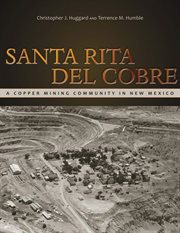Nonfiction
eBook
Details
PUBLISHED
Made available through hoopla
DESCRIPTION
1 online resource
ISBN/ISSN
LANGUAGE
NOTES
An account of the rise and fall of a mining town over two centuries, including photos: "An excellent story of the people and their community." ―New Mexico Historical Review The Spanish, Mexicans, and Americans, successively, mined copper for more than two hundred years in Santa Rita, New Mexico. Starting in 1799 after an Apache man led the Spanish to the native copper deposits, miners at the site followed industry developments in the nineteenth century to create a network of underground mines. In the early twentieth century these works became part of the Chino Copper Company's open-pit mining operations-operations that would overtake Santa Rita by 1970. In Santa Rita del Cobre, Christopher Huggard and Terrence Humble detail these developments with in-depth explanations of mining technology, and describe the effects on and consequences for the workers, the community, and the natural environment. Originally known as El Cobre, the mining-military camp of Santa Rita del Cobre ultimately became the company town of Santa Rita, which after World War II evolved into an independent community. From the town's beginnings to its demise, its mixed-heritage inhabitants from Mexico and the United States cultivated rich family, educational, religious, social, and labor traditions. Extensive archival photographs, many taken by officials of the Kennecott Copper Corporation, accompany the text, providing an important visual and historical record of a town swallowed up by the industry that created it.</
Mode of access: World Wide Web







